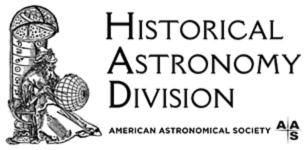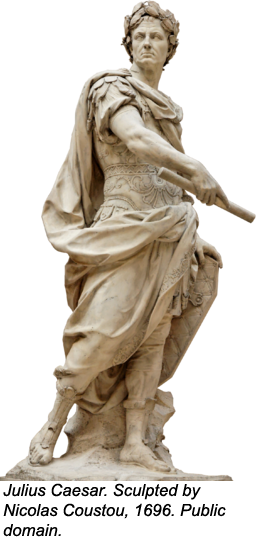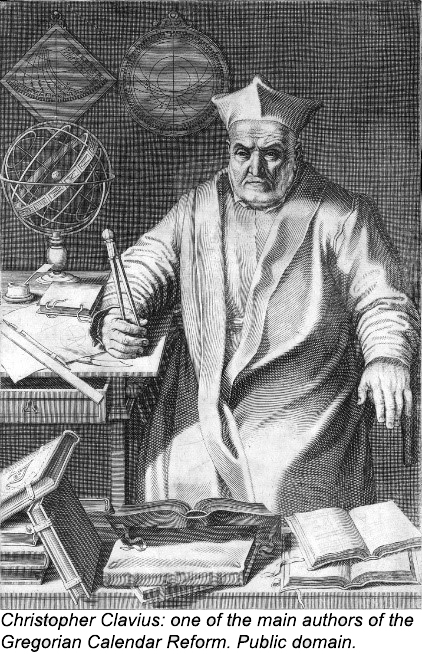This Month in Astronomical History: Calendar Reform
Teresa Wilson United States Naval Observatory
 Each month as part of this new series from the Historical Astronomy Division of the AAS, an important discovery or memorable event in the history of astronomy will be highlighted. This month, we look at various calendar changes throughout history.
Each month as part of this new series from the Historical Astronomy Division of the AAS, an important discovery or memorable event in the history of astronomy will be highlighted. This month, we look at various calendar changes throughout history.
 The vernal, or spring, equinox marks the midpoint between the winter and summer solstices. The number of daylight hours increases until the equinox when it finally equals, and then surpasses, the number of hours of darkness. This year, the vernal equinox falls on 20 March in the northern hemisphere. Had we been living in Mesopotamia around 2000 BC, we would be celebrating the beginning of the new year. In fact, the names of the last four months of the current calendar reflect this; September through December come from the Latin septem, meaning seven, through decem, meaning ten.
The vernal, or spring, equinox marks the midpoint between the winter and summer solstices. The number of daylight hours increases until the equinox when it finally equals, and then surpasses, the number of hours of darkness. This year, the vernal equinox falls on 20 March in the northern hemisphere. Had we been living in Mesopotamia around 2000 BC, we would be celebrating the beginning of the new year. In fact, the names of the last four months of the current calendar reflect this; September through December come from the Latin septem, meaning seven, through decem, meaning ten.
In 153 BC in Rome, the beginning of the year moved to 1 January to coincide with the start of the one-year term of the newly elected consuls. However, this was not widely observed and March remained the beginning of the year for many. Cue Julius Caesar and the year 46 BC. The existing Roman calendar ideally consisted of an ordinary 355-day year alternating with an intercalary 377- or 378-day year. However, the pontifices who determined the intercalations regularly abused their power to lengthen or shorten the year depending on whether their allies were in power. Over time, the average Roman citizen no longer knew the date. To prepare for the release of his new (our Julian) calendar on 1 January 45 BC, Caesar added several intercalary months so that the vernal equinox would fall on March 25, which extended the year to 445 days and created the "year of confusion."
 The new calendar aligned the civil year with the solar year and consisted of 365 days with a leap day inserted every four years. After Caesar’s assassination on 15 March 44 BC, the Senate deified him on 1 January 42 BC, and this remained the beginning of the year until the Council of Tours in 567 AD. Avoiding the pagan celebrations surrounding 1 January, Christians at this time chose different days to mark the beginning of the year, for example, March 25 (The Annunciation) in England, and Easter, movable as it is, in France.
The new calendar aligned the civil year with the solar year and consisted of 365 days with a leap day inserted every four years. After Caesar’s assassination on 15 March 44 BC, the Senate deified him on 1 January 42 BC, and this remained the beginning of the year until the Council of Tours in 567 AD. Avoiding the pagan celebrations surrounding 1 January, Christians at this time chose different days to mark the beginning of the year, for example, March 25 (The Annunciation) in England, and Easter, movable as it is, in France.
The Julian calendar was widely used until 1582, when Pope Gregory XIII reformed the calendar yet again. In the 3rd century, the Council of Nicea ecclesiastically fixed the equinox on 21 March to simplify the calculation of Easter. While the length of Caesar’s average year is close to the modern measurement of 365.24219 days in a tropical year, it drifted against the seasons by about 11 minutes each year so the actual equinox fell around 10 March in the 16th century. In Catholic countries, Thursday, 4 October 1582, marked the end of the Julian calendar; the next day, Friday, 15 October 1582, inaugurated the Gregorian calendar. The 16th century also saw the adoption of 1 January as New Year’s Day for many European countries. With its modified leap-year rule, the Gregorian calendar keeps better time than its predecessors, but is "fast" by about 26 seconds a year.
Another two centuries passed before the Gregorian calendar was adopted across the Western world. Great Britain and its American colonies accepted the new calendar in 1752, the same year they changed the start of the new year from 25 March to 1 January. Eastern European countries and parts of Asia slowly adopted it over the course of the 19th and early 20th centuries.
Future Reading
Richards, E. G. (2013). "Calendars." In Explanatory Supplement to the Astronomical Almanac, 585-624. 3rd ed. University Science Books.
Feeney, Dennis (2007). Caesar's Calendar: Ancient Time and the Beginnings of History. Berkeley: University of California Press
Douma, Michael, curator. (2008). “Early Roman Calendar.” Calendars exhibit. http://www.webexhibits.org/calendars/calendar-roman.html. Accessed March 02, 2017.
Hatcher, D. A. (1985). Generalized Equations for Julian Day Numbers and Calendar Dates. Journal of the Royal Astronomical Society 26, 151–155.
Meeus, J. and D. Savoie (1992). The History of the Tropical Year. Journal of the British Astronomical Association 102, 40–42.
Each month is an exciting new adventure into the archives of astronomical history, but before I continue any further, I would appreciate your feedback to ensure my writing is reaching the largest audience possible. Please participate in a brief questionnaire (approximately 10 minutes) about the style and content. You may also submit any suggestions for future topics. Thank you!

